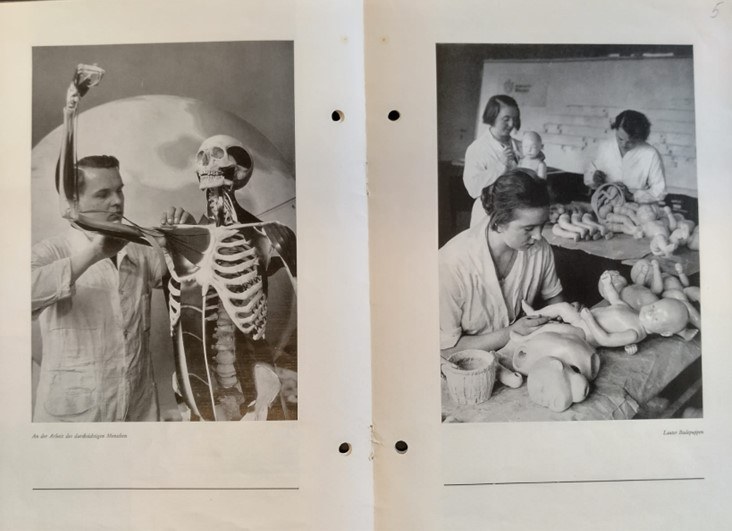Workshop // Alexandra Masgras: Eugenic Visual Culture and the Lure of German ‘Soft Power:’ The International Reach of the Deutsches Hygiene-Museum, 1919-1939
Termindetails
Wann
von 12:00 bis 13:00
Art
Wo
Fellows und Mitarbeitende des ZI sowie Gastwissenschaftlerinnen und Gastwissenschaftler berichten über laufende Arbeiten. Die offene Form des Workshops ermöglicht eine intensive Diskussion.
The international dissemination of Nazi racial hygiene through scientific networks is a well-established fact. Lesser known is the formation of these networks prior to the Nazi ascension to power, as well as the popular ramifications of such scientific knowledge. This presentation situates the Deutsches Hygiene-Museum [DHM] as a prime producer and international disseminator of eugenic visual culture in the interwar period.
Long before the Nazi ascension to power, the DHM boasted international partnerships whose reach was truly global, spanning Central and Eastern Europe, the Middle East, the United States and East Asia. In collaboration with foreign governments and private associations abroad, the museum organized travelling exhibitions and supplied research institutes with pedagogical material. In a conscious effort to overcome linguistic barriers, eugenic knowledge was generally conveyed through visual media, such as models and posters, prepared by the museum’s own artistic workshops.  This presentation argues that the DHM’s international prestige rested on a unique mixture of art, science, and political maneuvering. Drawing on archival research into the records of the Auswärtiges Amt and the DHM, this presentation foregrounds previously overlooked connections between German state interests and one of the most prolific producers of eugenic visual culture worldwide. This investigation thus combines a political-institutional history with formal analyses of the Museum’s artefacts. I show that the DHM workshops drew on modernist visual techniques to illustrate the latest findings in popular hygiene. Thanks to the Museum’s dissemination efforts, these artefacts became vehicles of an appropriately modernist ideology, which conflated Western hygienic standards with the essence of modern governmentality. By tracing the fortunes of the DHM from its roots in the 1911 International Hygiene Exhibition through Weimar and Nazism, this paper interrogates the role of visual culture in the reconfiguration of geo- and biopolitical entanglements in the tumultuous first half of the twentieth century.
This presentation argues that the DHM’s international prestige rested on a unique mixture of art, science, and political maneuvering. Drawing on archival research into the records of the Auswärtiges Amt and the DHM, this presentation foregrounds previously overlooked connections between German state interests and one of the most prolific producers of eugenic visual culture worldwide. This investigation thus combines a political-institutional history with formal analyses of the Museum’s artefacts. I show that the DHM workshops drew on modernist visual techniques to illustrate the latest findings in popular hygiene. Thanks to the Museum’s dissemination efforts, these artefacts became vehicles of an appropriately modernist ideology, which conflated Western hygienic standards with the essence of modern governmentality. By tracing the fortunes of the DHM from its roots in the 1911 International Hygiene Exhibition through Weimar and Nazism, this paper interrogates the role of visual culture in the reconfiguration of geo- and biopolitical entanglements in the tumultuous first half of the twentieth century.
[Caption: Sächsisches Staatsarchiv, 13688 Aktiengesellschaft für hygienischen Lehrbedarf, Dresden, 25, Das Deutsche Hygiene-Museum in Dresden und seine Werkstätten (Dresden: Wilhelm Limpert, ca. 1931), fs. 4v-5r.]
